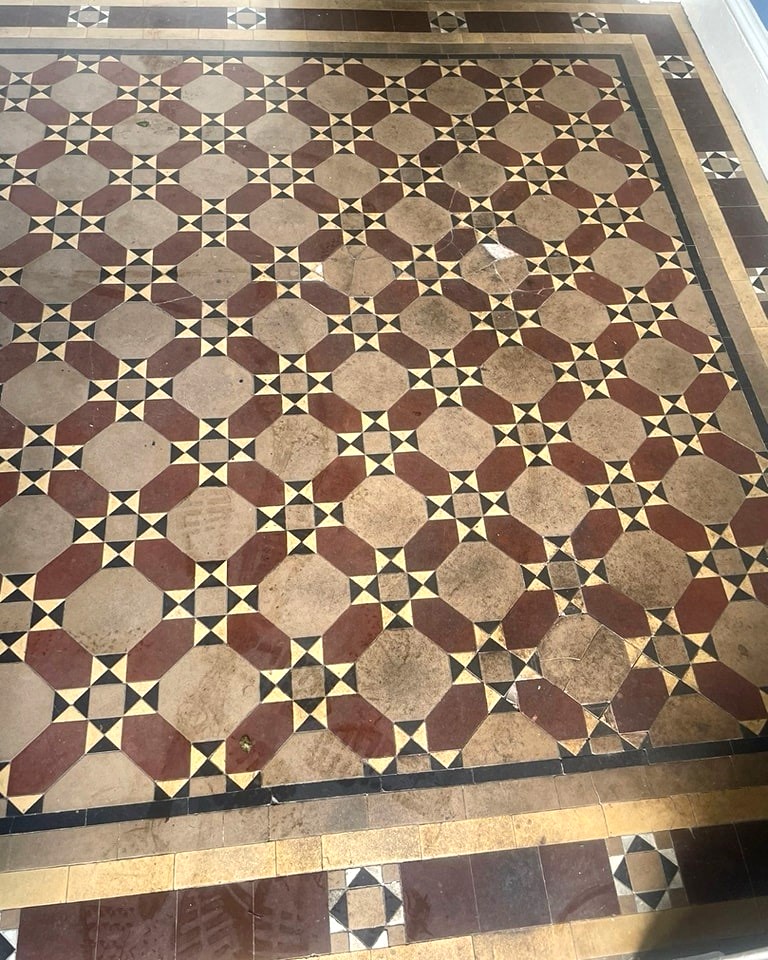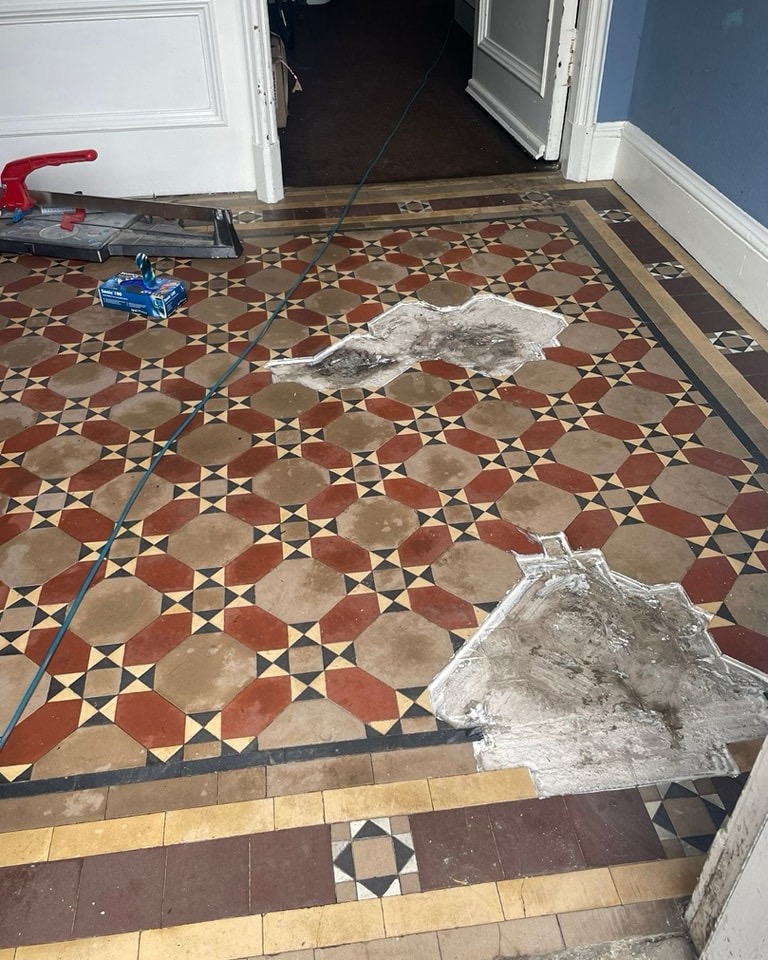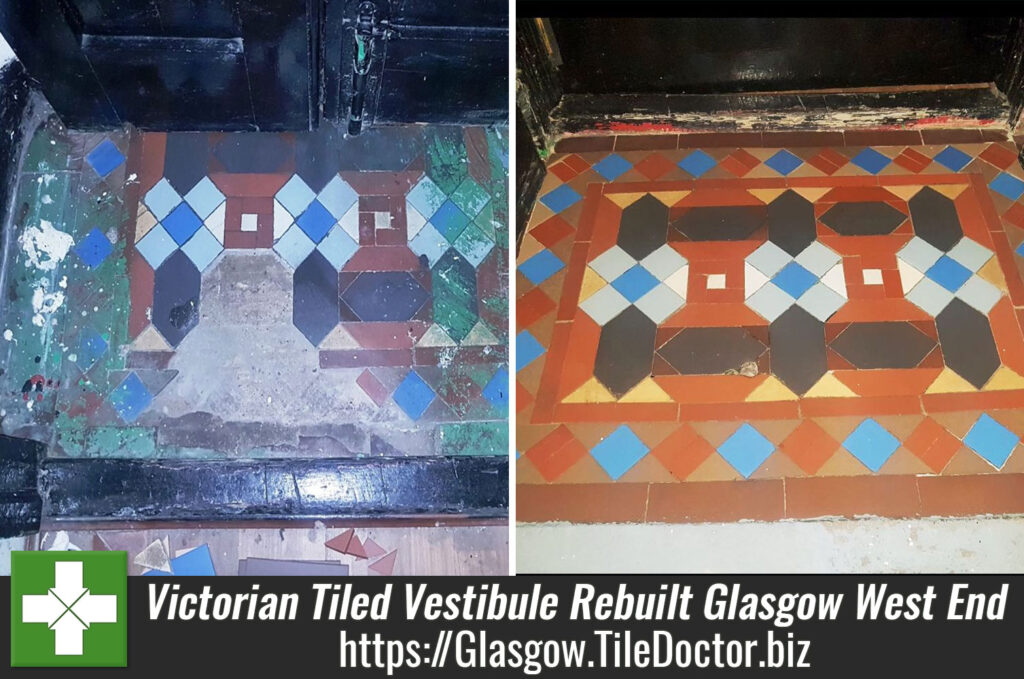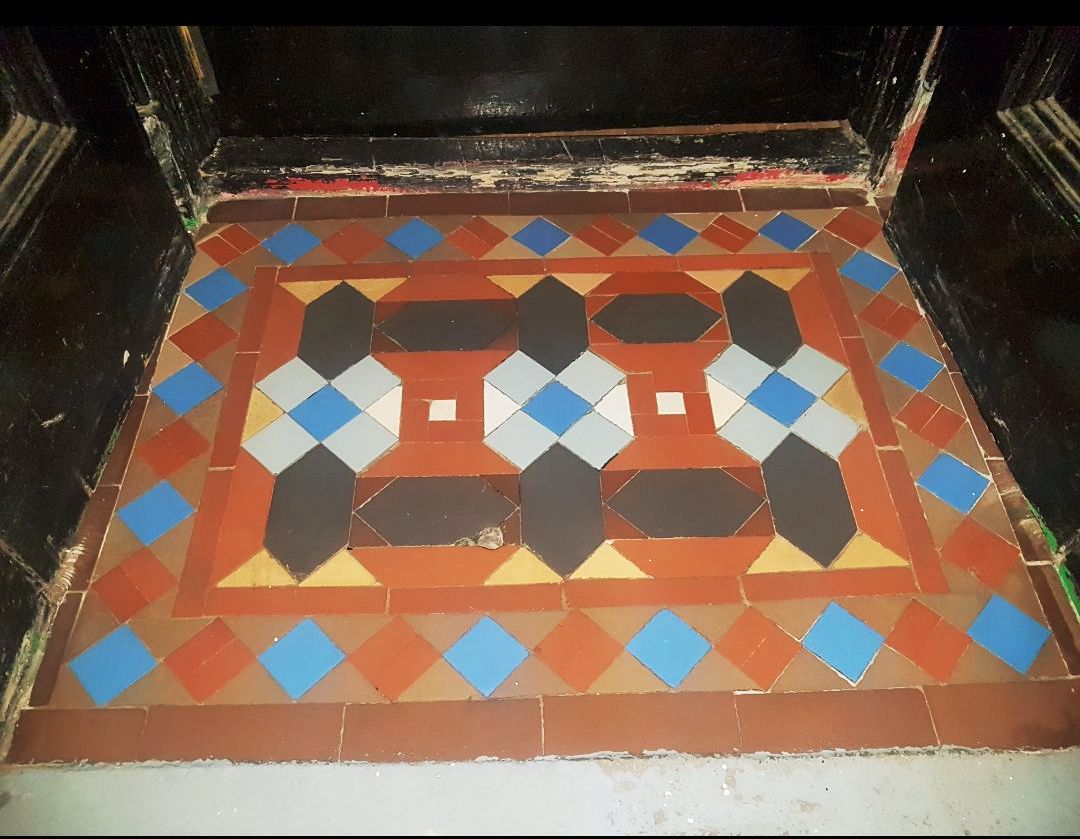Neglected Victorian Tiled Floor Repaired and Restored in Glasgow’s West End
The photographs below are of a large Victorian Tiled floor at a property in Glasgow’s West End. The floor had been sadly neglected over the years leaving it dull, dirty and damaged with several cracked tiles.

I visited the property to discussed with the client the work needed to carry out a full restoration which included replacing the broken tiles and renovating the whole floor. From the survey I worked out a restoration plan which in turn was converted into a quote for completing the work which would take three days. Happy with the plan and my quote I was given the go ahead and a date scheduled.
Repairing a Damaged Victorian Tiled Floor in Glasgow
Work started with replacing the broken tiles and loose tiles that we identified during the survey. These had to be removed very carefully so as not to disturb more than was necessary. Once removed the base was cleaned up and all the old adhesive removed.

Replacement tiles, that we had sourced before arriving, were then cut to shape and dry fitted into the gaps until I was happy that the original pattern had been replicated. Only then were the replacements fixed in place along with any salvageable loose tiles. Once the repairs were carried out, we then left this to set and fully dry out before returning to begin the cleaning.
Repairing and Cleaning a Victorian Tiled Floor in Glasgow
On the second day we arrived and after checking the work from yesterday had set correctly started setting up to deep clean the floor. This commenced with pasting Tile Doctor Acid Gel onto the tiles and then after ten minutes scrubbing it in with a coarse 200-grit diamond pad. This process released the dirt from the Victorian tiles into the solution turning it a black slurry.
The floor was rinsed with a little water and the soiling extracted with a wet vacuum. Once the whole floor had been cleaned the tiles were further refined using finer diamond burnishing pads of 400, 800 and 1500 grit. The pads are applied with water to help lubricate the process and the soiling generated is extracted with the wet vacuum after each pad.
To finish the cleaning process the floor was given a final clean using Tile Doctor Grout Clean-up and after a final rinse and extraction were left for a week to dry.
Sealing a Victorian Tiled Floor in Glasgow
The tiles were left for a week as I wanted to ensure they were completely dry before applying the sealer. Applying sealer to a damp tile can result in a patchy appearance.
Given the age of the floor, I decided to apply a fully breathable sealer called Tile Doctor X-Tra Seal. This is an important consideration when sealing old, tiled floors as it will allow for any moisture to rise through the tile and evaporate at the surface, otherwise moisture can become trapped until the floor resulting in damp issues. X-Tra seal is oil-based so helps add structure to the tile and being an impregnator that soaks into the tile it provides very durable protection.

The client was very pleased with the newly restored floor, and for ongoing cleaning I recommended the use of Tile Doctor Neutral Tile Cleaner. This product has a neutral Ph which is ideal for sealed surfaces; stronger bleach-based cleaners are simply too strong for use on sealed tiles and will erode the sealer prematurely.
Professional Restoration of a Victorian Tiled Floor in Glasgow
Neglected Victorian Tiled Floor Repaired and Restored in Glasgow’s West End Read More »





